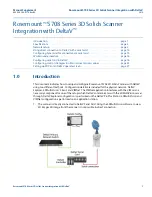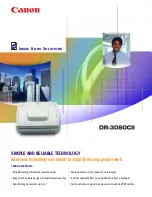
Installation
3-2
3.4 Select the Scanner Interface
Different scanner models support specific types of interface
connections. On some scanners, two different types of interfaces can
be used and you need to select the one that is best for your scanning
purposes and is compatible with your PC system. The Interface types
and their advantages are described in the following section.
3.4.1 Interface Types
FireWire
FireWire is currently the fastest connection type for both color and
monochrome scanning. FireWire can accommodate 400 megabits
(around 50 megabytes) per second, which is more than adequate for
high volume scanning of large formats. FireWire is a plug-and-play
(PnP) specification. You do however need a FireWire card installed on
your computer and many computers are delivered with a FireWire
card preinstalled. Check your computer specifications and operating
system to see if your system is equipped for FireWire connectivity.
Note:
FireWire is not supported on Windows NT.
USB
USB is a connectivity specification that allows computer peripherals to
be attached to a computer and eliminates the need to open the
computer and install cards into dedicated slots. USB is a plug-n-play
(PnP) specification that does not require configuration of switches or
jumpers as with SCSI.
The USB 1.1 bus provided with USB connection scanners supports a
data transfer speed of 12Mbps. USB is supported on Windows 98 or
above. USB is not supported on Windows NT. Most newer PC’s and
laptops come equipped with a USB port.
USB 1.1 is relatively slow with color scanning compared to FireWire
and SCSI.
SCSI
Setting up the SCSI connection requires installation of an SCSI board
in your PC, installing the SCSI driver and setting the scanners SCSI
connection ports. SCSI is recommended if you cannot use the
FireWire connection option yet you require high speed color scanning.
SCSI interface scanners support the Ultra SCSI (8-bit Narrow) SCSI
type interface.
SCSI is supported on Windows and Windows NT host platforms.








































